Hino 700 Series 4x2 prime mover Review
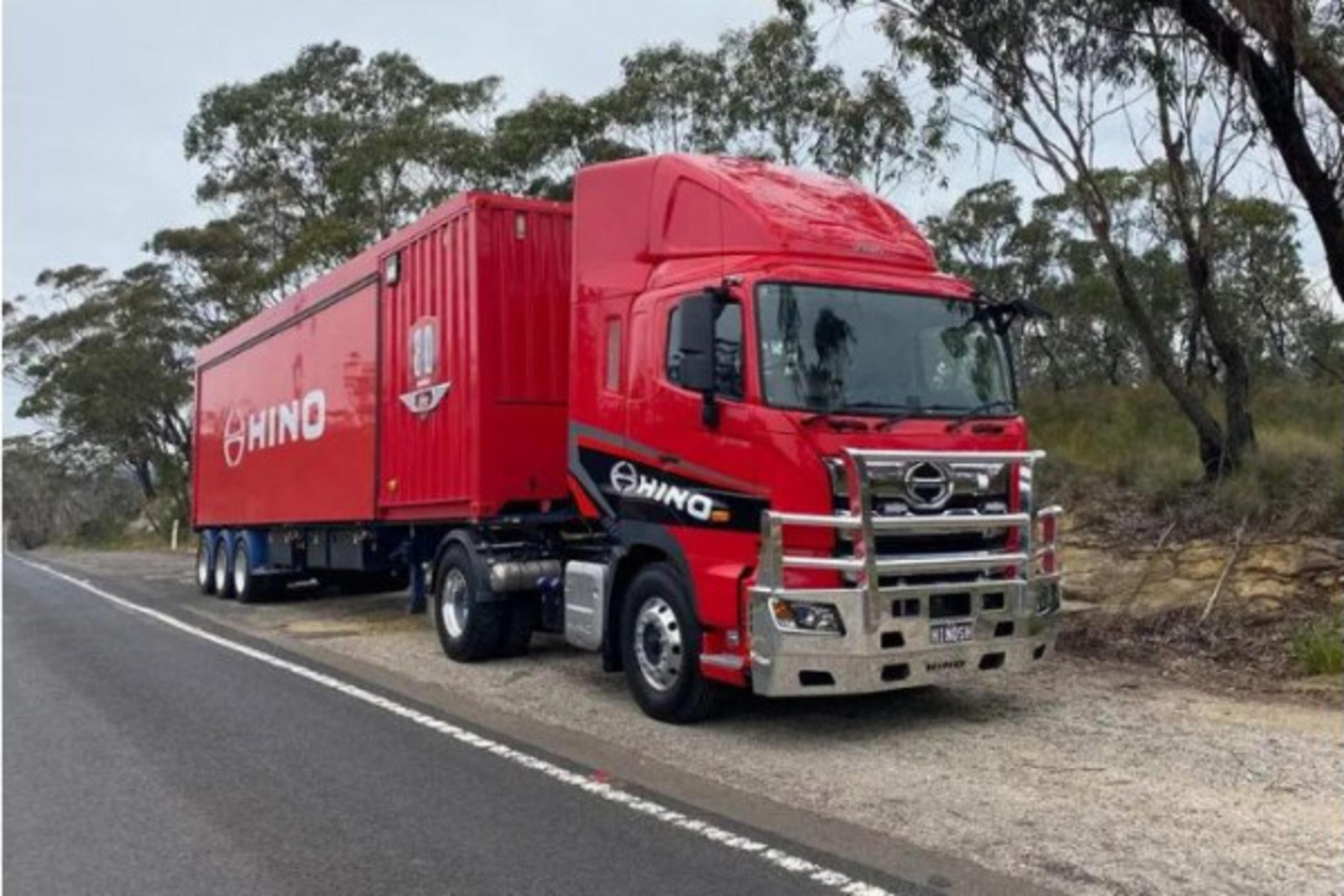
Hino 700 Series 4x2 prime mover Review
Over the past couple of years we’ve worked our way through the Hino 700 Euro 6 model range and capped it in late-2023 with a demanding test of the SH 1845 4x2 prime mover, pulling the company’s car-race promo trailer
If you’ve attended any of the Supercars racing events around Australia there’s a good chance you’ve come across Hino’s Sports Deck hospitality trailer. Our road test Hino 1845 model was the tug for this travelling show.
The Sports Deck module was designed to sit on a conventional skeletal trailer, so with a gross combination mass of a little over 22 tonnes, the tri-axle back end was overkill. Due to this relatively modest GCM behind a 450hp/2157Nm engine, we decided on the hilliest route we could find ex Sydney – the long haul up the Great Western Highway to the Blue Mountains and then the very steep up and down grades of the Bells Line of Road, followed by greater-Sydney’s peak-hour traffic.
The 4x2 prime mover market is quite specialised in Australia, with the main buyers being car haulers and empty-container carriers. In Europe, it’s a totally different story, with nearly all prime movers being 4x2s, pulling wide-single-tyred trailers with generous king-pin leads and set-forward tri-axles. These close-coupled combinations are extremely manoeuvrable.

At only 22 tonnes, the Hino was a bit of a hotrod
Our Sports Deck rig wasn’t like that, because the combination of short, 3.4-metre wheelbase, zero king-pin lead, neutral fifth-wheel position and aft-set tri-axle meant that it had plenty of trailer cut-in on corners. That brought back memories of the 1970s, when single-axle prime movers pulling spread-tandem-axle trailers were an East Coast staple.
Of course, back then there were only around 150 lean horses pulling, so ’bogie drag’ through corners mean dropping gears rapidly to keep the old bangers going.
Suffice to say that with nearly 2200Nm of torque and 16 self-shifting gears in its ZF Traxon box, the single-drive Hino was an entirely different matter.
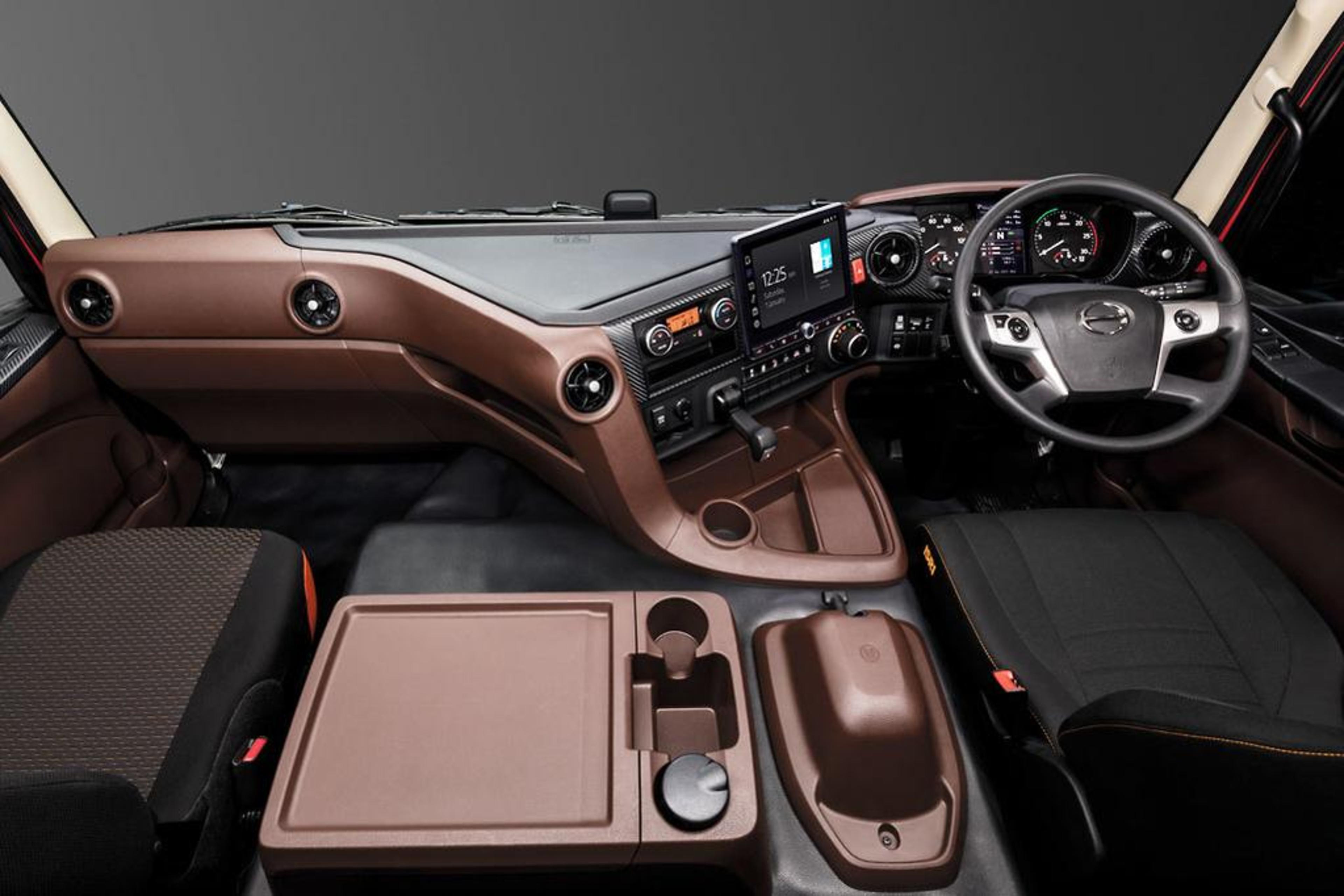
The interior of the 700 Series is slick and modern with plenty of comfort and storage space
We’ve tested six different Hino 700 variants, so we won’t labour the points already made about this heavily revised model range.
Like the other 700 Series Hinos the 4x2 models scores a reversing camera, pre-collision system (PCS) with autonomous emergency braking (AEB), pedestrian detection (PD), lane departure warning system, and vehicle stability control.
Using the truck’s forward-facing radar and camera, PCS scans the road in front of the truck and warns the driver visually and audibly if it detects an imminent collision. Should the driver fail to respond with braking effort, the PCS activates AEB.
A stand-out inclusion is the Driver Monitor camera that’s integrated into the driver’s side A-pillar moulding. This camera scans driver eye and head movements and warns of any inattention or dozing.
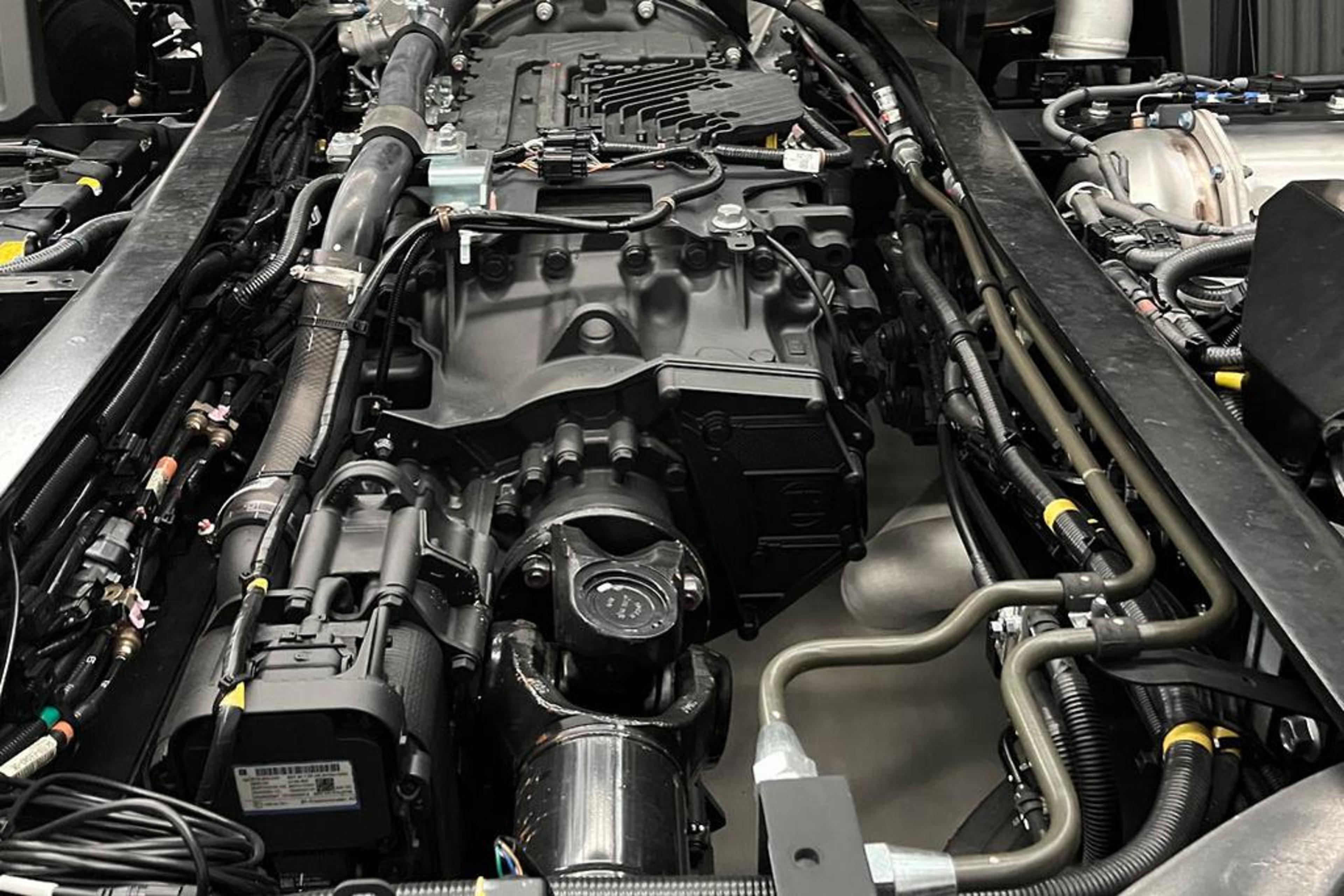
The transmission shown here with the retarder at lower left along with some of its cooling plumbing
As well as these range-shared safety initiatives, the specifics of the 4x2 model merit some attention: in particular, the super-compliant, single-drive rear end. This in all-Hino affair, with four electronically-controlled air springs, a massive anti-sway bar and across-axle differential lock that gives it plenty of rough-site articulation and traction, as well as dock-height variability, via a hand-held controller.
We checked out its compliance on some potholed road verges and couldn’t provoke any tyre slip that required diff-lock intervention.
Another significant change is in the braking department, where the 4x2 scores four-wheel, 434mm-diameter disc brakes, in contrast to the tapered-roller, wedge-type drum brakes fitted to the multi-axle models.
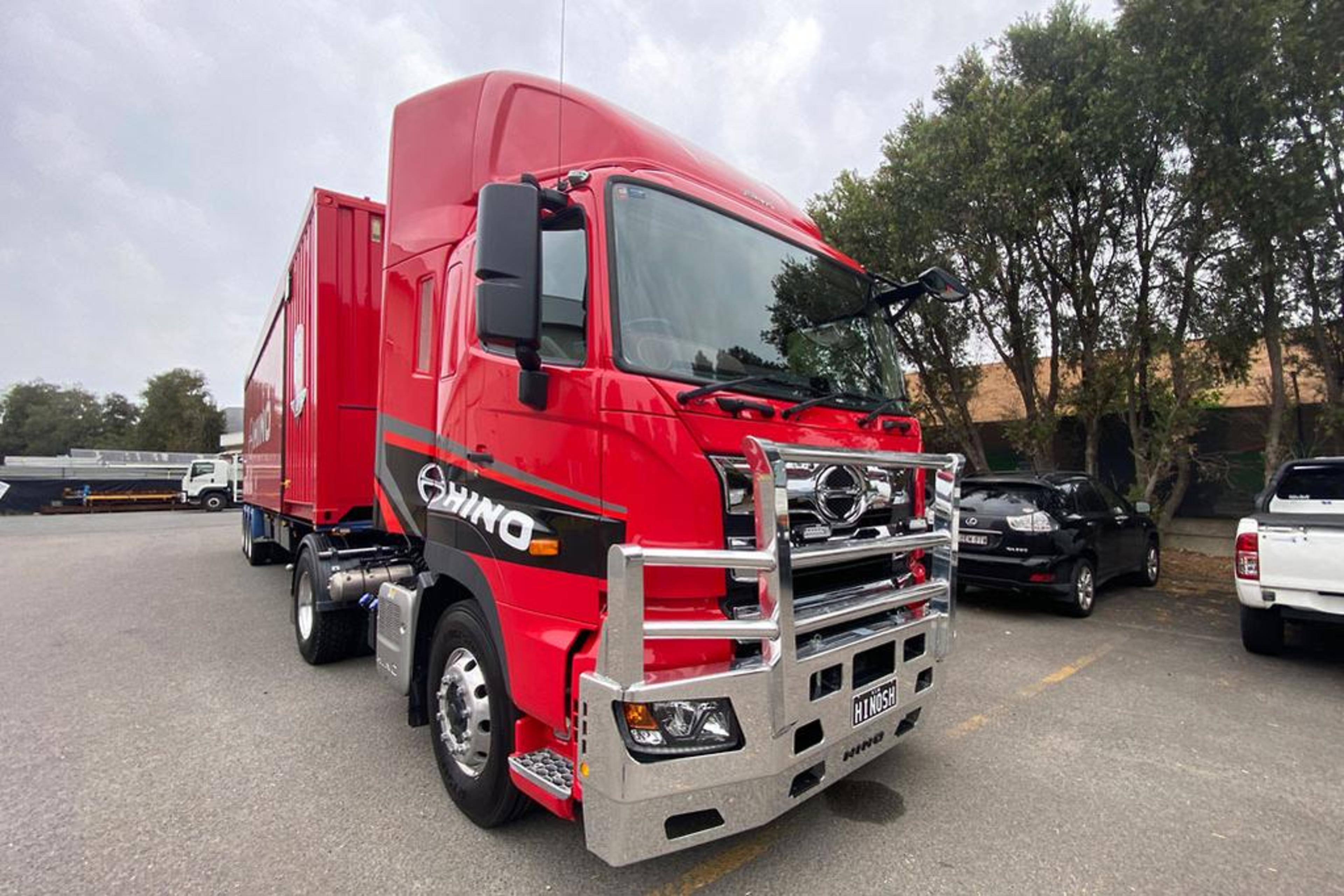
It's easy to get in and out with only a couple of grippy steps
Electronic braking (EBS) supplements the fall-back pneumatic signal line to the brake modulator valves with an electronic link that’s much faster. EBS is also reactive to axle weight and has a target retardation figure in response to brake pedal pressure, so braking is consistent.
Speaking of braking, the Hino 700 4x2 has the same Jacobs Brake andautomated-manual, Traxon 16-speed AMT transmission as the multi-axle models, along with the ZF Intarder, a hydraulically-actuated retarder as standard.
It was the shift quality in that very ZF Traxon, automated-shift box that we wanted to check out on our steep test route that took in more than 2000 vertical metres of climbing and descending.
Head for the hills
The relative luxury of 450hp/2157Nm and a 16-speed auto in front of only 22 tonnes meant that progress through the metro area was relaxed, other than for the need to take tight corners with plenty of width.
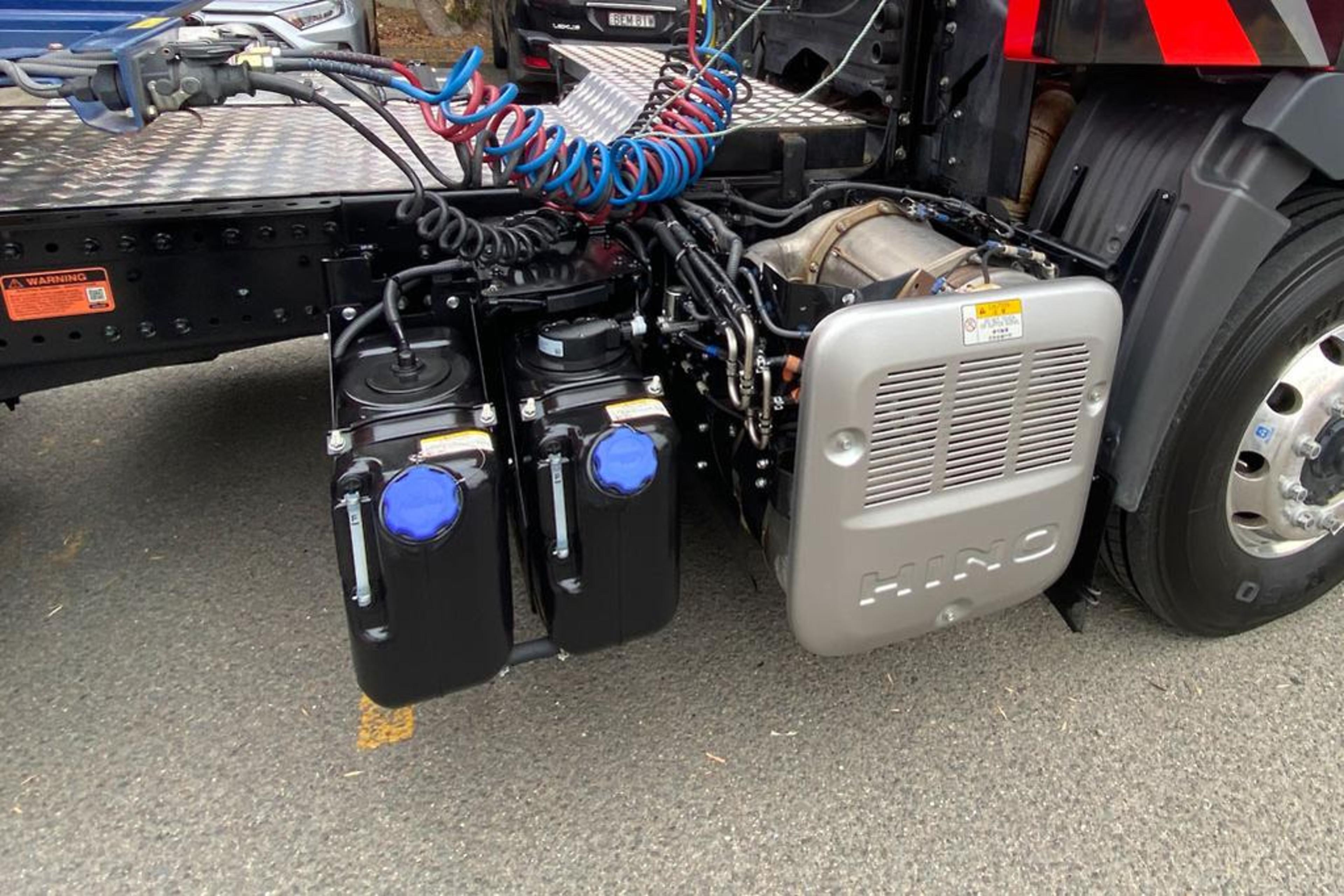
Fuel load is 450 litres and 56 litres of AdBlue
I found that the generous power/torque-to-weight ratio brought with it some peculiarities, because a feather-foot touch on the accelerator sometimes caused confusion in the AMT electronics. It was as if the computer was thinking: “Does he want to go, or slow down?”
I soon tumbled to the need to be assertive when performance was needed, by holding the right foot flat. For flat-terrain driving, highway cruising and just blending with traffic speed, a light accelerator foot let the box perform wide skip-shifts – typically only five or six ratios between lift-off and cruise.
Adaptive cruise control took the hard work out of freeway driving, keeping the truck well clear of other vehicles, without unnecessarily savage response to vehicles cutting in ahead.
Hino’s ES, ‘easy smooth’ hill-holding function was appreciated, because there’s no torque converter in the Traxon box. The ES system allowed time for a smooth right foot transfer from ‘stop' pedal to ‘go’ pedal.
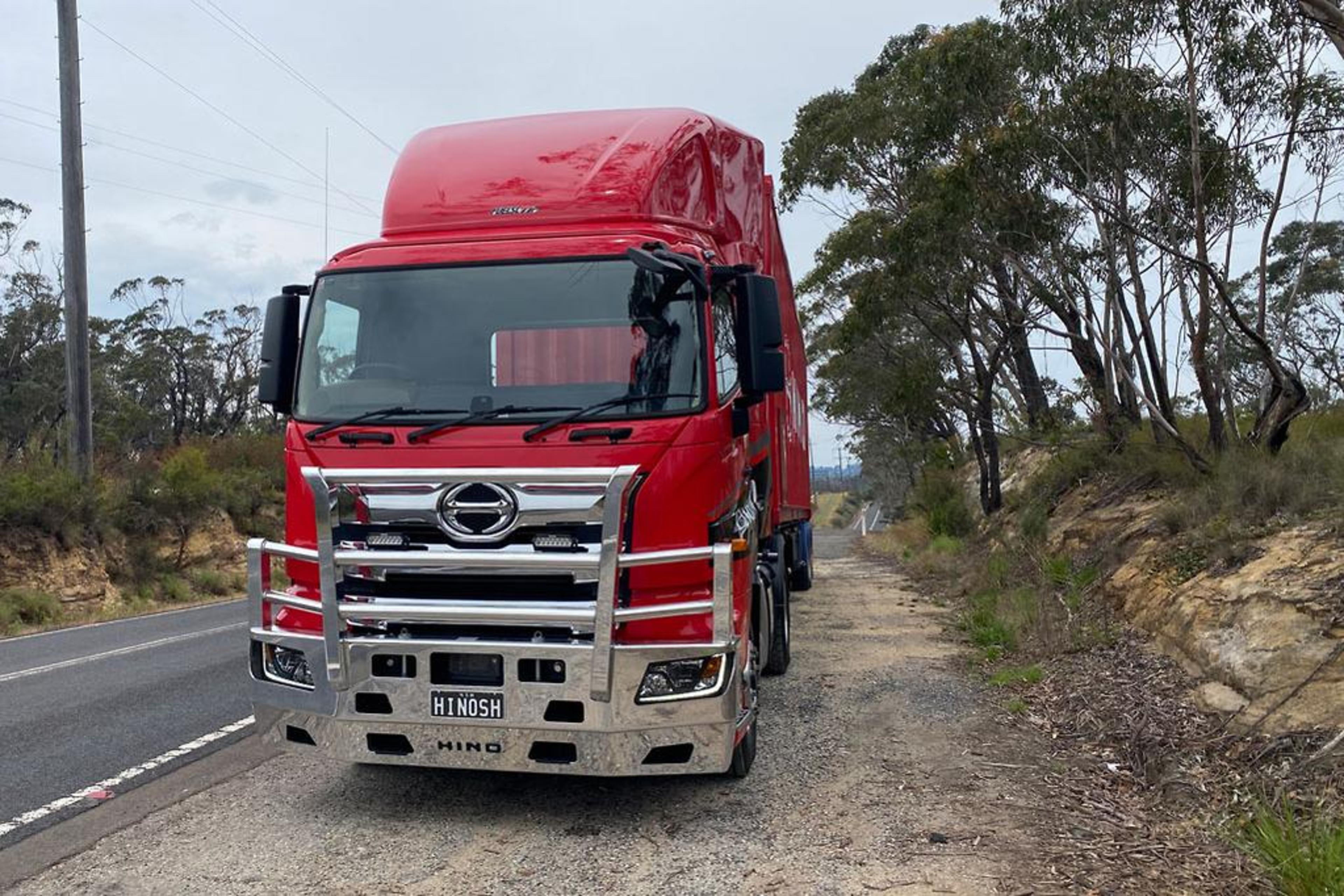
Note the triple wipers that provide a great spread across the windscreen
Although you wouldn’t necessarily specify a 16-speed box and four-position engine brake/retarder for a 4x2 prime mover, that decision in favour of commonality across the whole 700 model range meant that the Sports Deck combination enjoyed ideal ratios across our entire hill-climbing and descending venture.
The engine never seemed stressed and in-cabin noise was commendably low, even on step climbs.
Retardation power was most impressive and equal to the powerful ‘regenerative braking’ you get in a battery-electric truck. When I needed to slow down for traffic lights or on steep grades, it was easy to play with the retarder wand and the service brakes were needed only for coming to a final stop.
It was satisfying to hear very little noise coming from the Hino’s Jake/Intarder operation, in stark contrast to the ‘bark’ from less effective, open-exhaust engine brakes from the North American tippers we shared the road with.
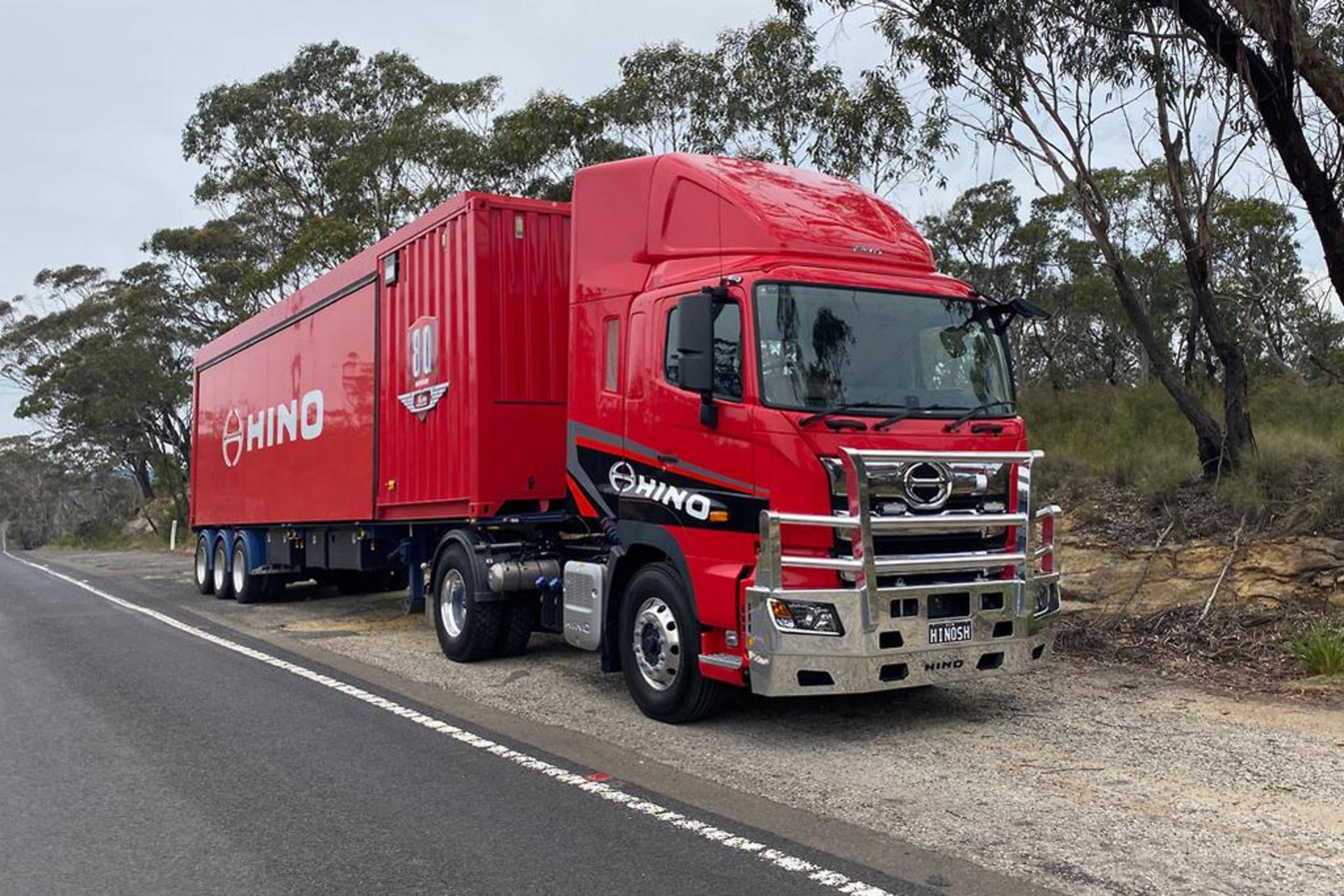
We got top fuel consumption as you'd expect with one light trailer
Fortunately, the powerful retardation function is blocked when the 4x2 is bobtail, because it would certainly lock up the drive wheels.
Fuel economy wasn’t a priority on this particularly steep-terrain test, but the Hino SH 1845 result was a more than acceptable 3.7km/L.
Although the Hino SH 1845 test vehicle was on the light side, I reckon the choice of very demanding terrain gave me enough insight into the Hino 700 range’s excellent calibration of engine and AMT. Earlier efforts were OK, but not as classy as the current model setup. The shift behaviour is as good as any in the market.
The final word
This Hino SH 1845 test showed that, once again, a Japanese truck was in its absolute ‘sweet spot’ at less than Australian-maximum weights. In Japan, the maximum heavy truck GVM-GCM is in the 25 to 36-tonne bracket and that’s where Japanese trucks have made their impact in the Australian market.
Since the first UDs, Isuzus, Fusos and Hinos were brought Down Under in the 1970s they’ve come to dominate the Australian light, medium and medium-heavy markets.
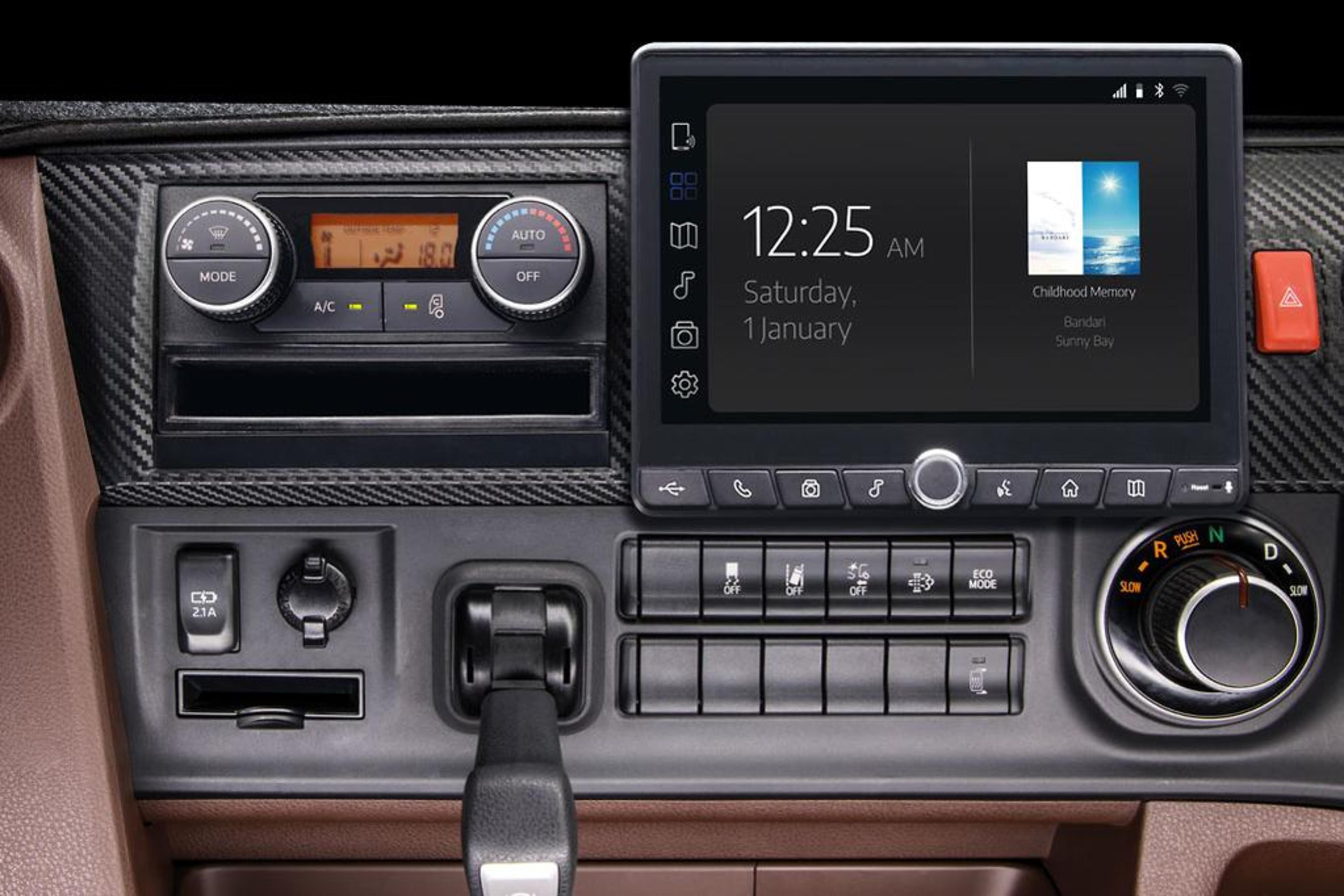
The dash is well laid out and the fit and finish is terrific
Despite several attempts over the years at tackling the heavyweight linehaul market in Australia – mainly by successive North American engine powered UD models and Isuzu’s Giga – Japanese truck strengths remained in the sectors for which they were primarily designed.
However watch this space, as some of the Japanese companies and their corporate tie-ups could challenge the status quo. And if they get the formula right, they just might beat the big boys at their own game.
Quick specs:
Engine: Hino E13C-B
Type: Diesel, turbocharged and intercooled, six-cylinder, OHC
GVM 16,000kg
GCM 42,000kg
Power 450hp/331kW
Torque 2157Nm
Transmission ZF TraXon 16 Spd AMT
Wheelbase 3.4 m

